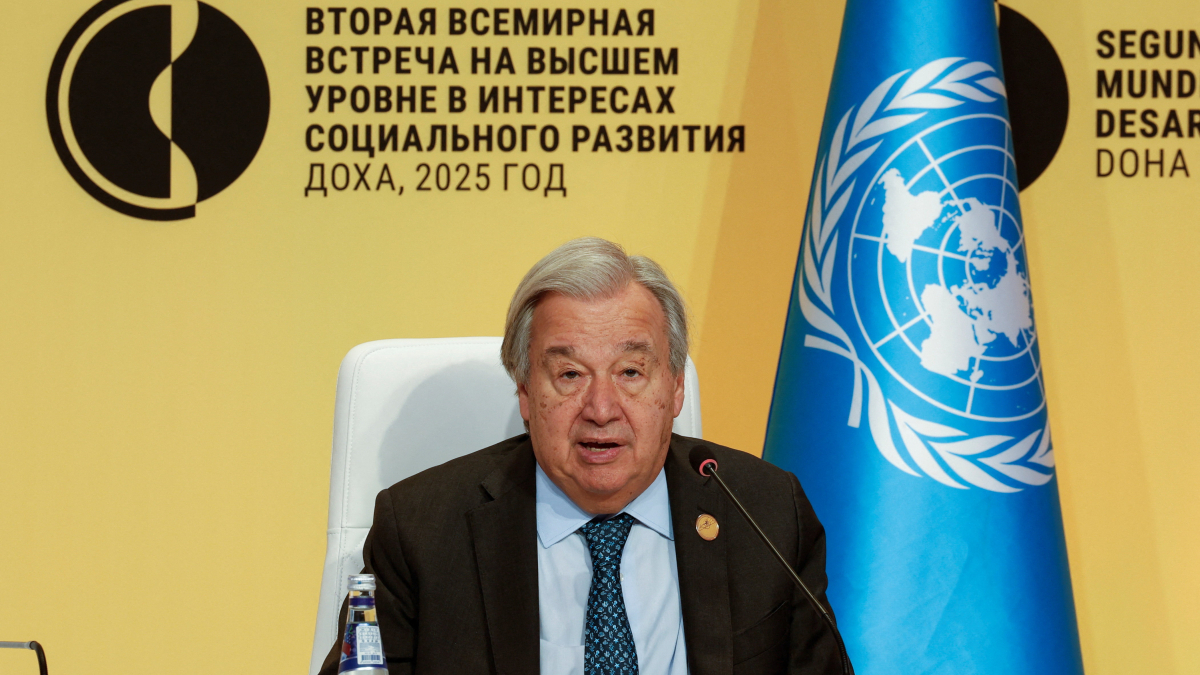Ukraine claims critical strike on Russian submarine in Novorossiysk
Ukraine’s domestic security service, the SBU, says it struck a Russian Kilo‑class submarine in the Black Sea port of Novorossiysk, causing critica...

The world remains far off track to meet the goals of the Paris Agreement, according to the 16th edition of the UN Environment Programme’s (UNEP) Emissions Gap Report, released this week.
The report finds that even if all current national climate pledges are fully implemented, global warming by the end of this century is projected to reach 2.3 to 2.5°C above pre-industrial levels.
If countries only follow current policies, the temperature rise would reach about 2.8°C the report warns, far beyond the 1.5°C threshold scientists say is critical to avoid the most dangerous climate impacts.
Compared to last year’s projections of 2.6–2.8°C under pledges and 3.1°C under current policies, the new figures suggest a modest improvement.
However, UNEP notes that methodological updates account for roughly 0.1°C of that change, while the upcoming withdrawal of the United States from the Paris Agreement will cancel out another 0.1°C.
In practical terms, the latest round of Nationally Determined Contributions (NDCs) has “barely moved the needle” on global temperature projections.
The Paris Agreement commits nations to limiting global warming to “well below 2°C” and to pursue efforts to keep it under 1.5°C.
Yet the 2025 report finds that meeting those goals will require drastic cuts to greenhouse gas emissions by up to 35 percent by 2035 to stay on a 2°C pathway, and 55 percent to align with 1.5°C, compared to 2019 levels.
“Given the size of the cuts needed, the short time available, and a challenging political climate, exceeding 1.5°C is now very likely within the next decade,” the report concludes.
UNEP warns that a temporary overshoot of 1.5°C is almost unavoidable, but stresses that it must be limited in scale and duration. Faster and deeper reductions in emissions are essential to minimize climate risks and damages, and to make it technically feasible to return to 1.5°C by the end of the century — though doing so will be “extremely challenging.”
Every fraction of a degree of avoided warming, UNEP says, means lower losses for people and ecosystems, lower economic costs, and less dependence on uncertain carbon removal technologies later this century.
Since the Paris Agreement was adopted a decade ago, global temperature projections have fallen from 3–3.5°C to the current 2.3–2.5°C range — progress driven largely by technological advances rather than political breakthroughs.
UNEP points out that low-carbon technologies such as wind and solar power are now widely available and increasingly cost-effective, with deployment accelerating worldwide. The challenge lies instead in political will, financial support to developing countries, and restructuring the global financial system to enable a large-scale green transition.
The 2025 Emissions Gap Report underscores a stark truth: despite rising climate awareness and rapid growth in renewable energy, current national efforts are insufficient to prevent severe and irreversible climate disruption.
To stay on track for 1.5°C, global cooperation must intensify, especially in scaling up climate finance, phasing out fossil fuels, and ensuring equitable access to clean technologies.
“Climate change remains a collective action problem,” UNEP notes. “The technologies exist, the pathways are known, what’s needed now is the political choice to act faster.”
Russia’s human rights commissioner, Tatyana Moskalkova, has said that Ukraine has not provided Moscow with a list of thousands of children it alleges were taken illegally to Russia, despite the issue being discussed during talks in Istanbul.
Iranian authorities have seized a foreign tanker carrying more than 6 million litres of smuggled fuel in the Sea of Oman, detaining all 18 crew members on board.
An explosive device found in a vehicle linked to one of the alleged attackers in Bondi shooting has been secured and removed according to Police. The incident left 12 people dead.
The latest round of clashes between Thailand and Cambodia has left 15 Thai soldiers dead and 270 others injured, Thailand’s Ministry of Defence spokesman Surasant Kongsiri said at a press conference on Saturday.
Syrian President Ahmad al-Sharaa has offered condolences to President Donald Trump following an ISIS attack near the ancient city of Palmyra that killed two U.S. soldiers and a civilian interpreter, Syrian and U.S. officials said Sunday.
At least 37 people have been killed in flash floods triggered by torrential rain in Morocco's Atlantic coastal province of Safi, Moroccan authorities said on Monday (15 December).
Climatologists say Poland has logged its warmest December in 74 years, with 2025 continuing a run of above-average temperatures and repeated national records.
As the world marks the tenth anniversary of the Paris Agreement, progress in combating global climate change is mixed.
An extratropical cyclone has caused widespread disruption across Brazil’s São Paulo state, with powerful winds toppling trees and power lines, blocking streets and leaving large parts of the region without electricity.
Indonesia's military stepped up its relief efforts in three provinces on Sumatra island that have been devastated by deadly floods and landslides, and the country's vice president apologised for shortcomings in the response to last week's disaster.
You can download the AnewZ application from Play Store and the App Store.

What is your opinion on this topic?
Leave the first comment